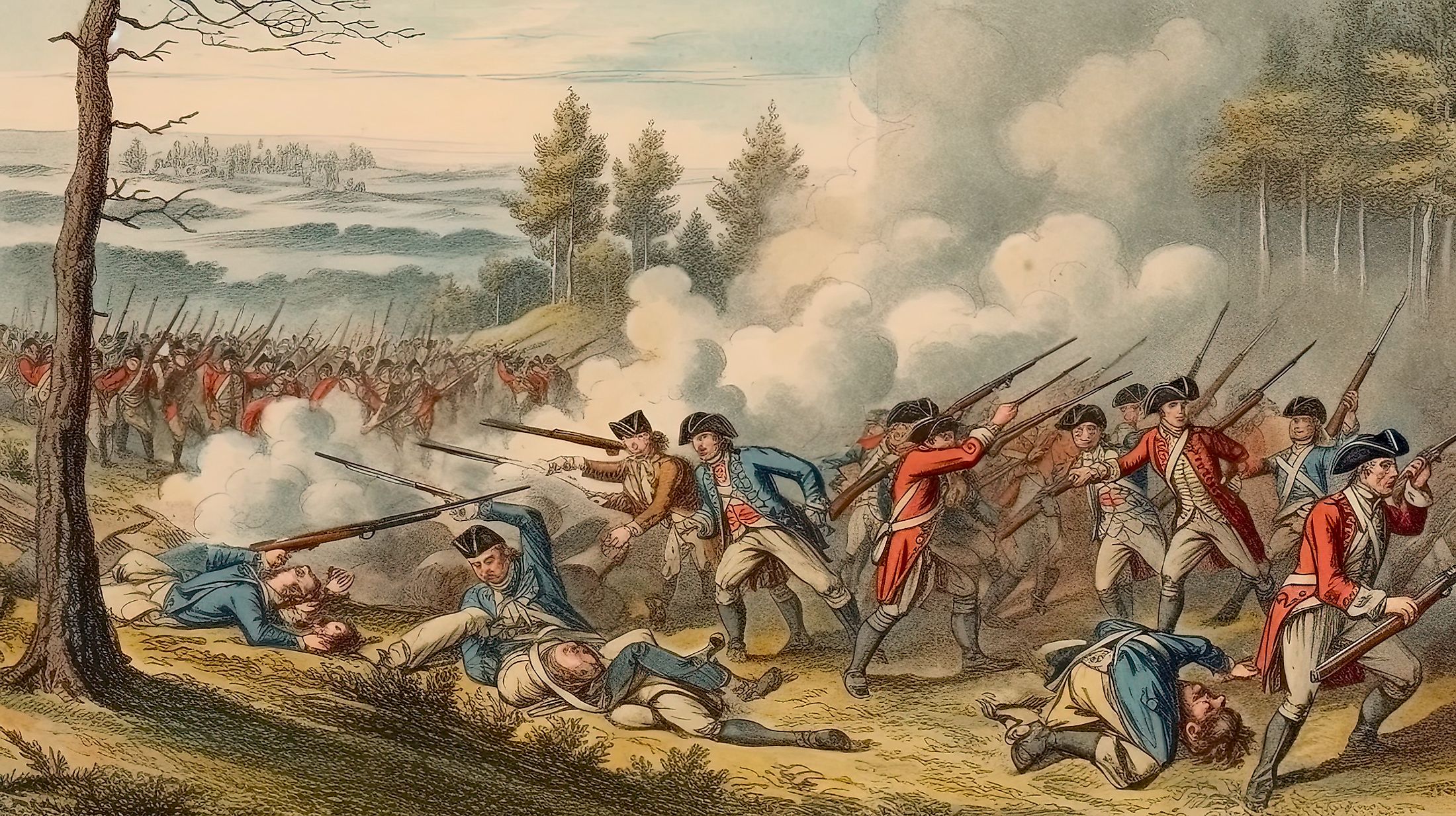
How Many People Died In The Revolutionary War?
The most important conflict fought in American history, the outcome of the Revolutionary War, would quite literally forge the foundation of the United States. It is easy to get caught up in the war's many key battles, outcomes, and key figures, but the sheer human cost of this war is seldom discussed. Not only was the American War for Independence destructive and brutal, but the sheer death toll on both sides of the war was staggering once put into perspective. The various battles and skirmishes that took place, of course, claimed many lives, but it is often overlooked how many soldiers and civilians died as indirect and even unintended consequences of the war.
Background Of The Revolutionary War
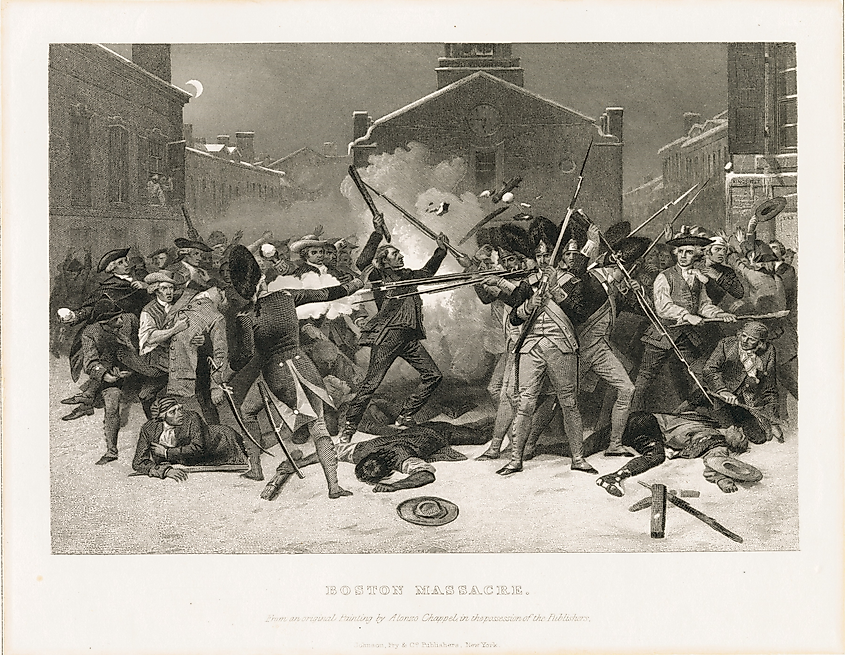
By 1765, tensions were high in the British colonies. The British, along with their colonial subjects in the New World, had just fought a successful yet costly war against the French and their Indigenous allies for control of the North American continent. The British introduced a series of new taxes in the aftermath of the war in an attempt to fit the bill, but these out-of-touch laws only alienated and enraged a significant yet vocal minority of American colonists. These colonists felt as though they were unable to pursue their own destiny or accurately represent their own voice in government. The slogan "no taxation without representation" soon became a popular battle cry for any aggrieved American colonist, no matter their opinion on independence.
It is hard to know for certain, but most historians estimate that only a third of the colonists in the Thirteen Colonies wanted independence from Britain in the years leading up to the war. Another third was staunchly against leaving the British Empire, while another was either indifferent or undecided. Regardless, as the colonists became increasingly rebellious and frustrated with their complaints falling on deaf ears, the British authorities responded with a heavy hand. In 1770, a mob of protestors was fired upon in Boston, killing five men. Known as the Boston Massacre, this event was used as irrefutable proof that the British were unwilling to come to the table to discuss expanding the rights of colonists.
The First Continental Congress
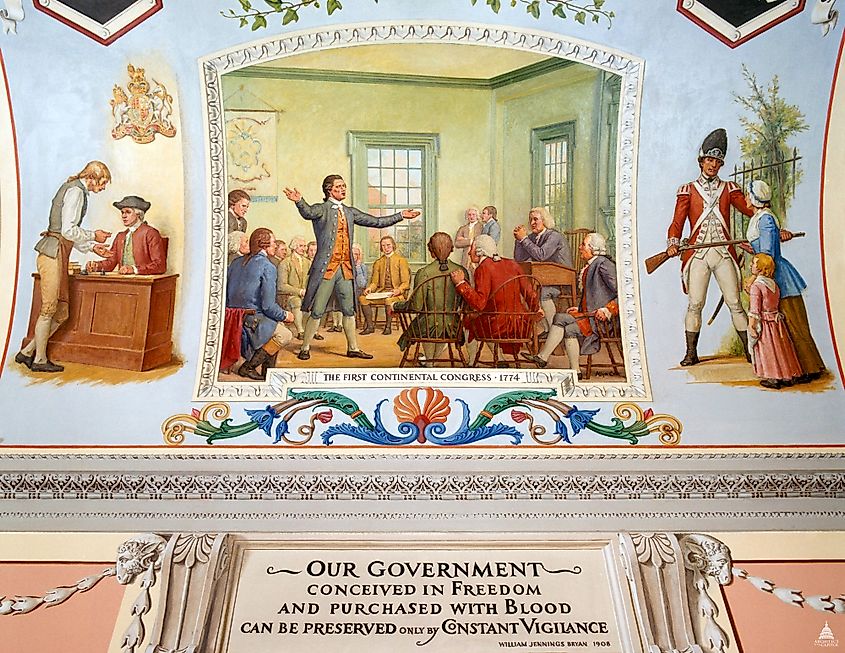
In 1774, the First Continental Congress was called by a group of colonial aristocrats and politicians. Later dubbed as the Founding Fathers, these colonial delegates attempted to search for a peaceful resolution towards having the concerns of the colonists met. Unfortunately, this could not be achieved, and violence broke out soon after.
The first clash between colonists and British soldiers took place in Lexington, Massachusetts, in 1775. Only a handful of men were killed on each side as the British cleared away the militia, but this quick skirmish would mark the beginning of the long and bloody road towards American independence.
Official Battle Casualties
American Casualties
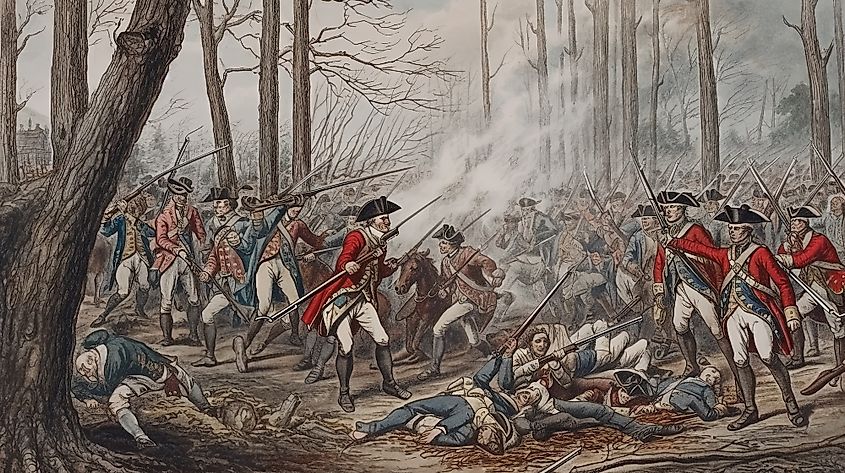
Spanning over eight years between 1775 and 1783, nearly 9,000 Americans died in battle fighting for independence. The American forces suffered major setbacks throughout the war and faced outright defeat on numerous occasions.
The colonist military fighting against the British forces was usually made up of militia members rather than professional soldiers, and this disparity between the two armies was often apparent in open battle. While the British army was far from the best in the world, it was still head and shoulders above what the Americans could field at the time and had a clear advantage in the classical line battle style types of engagements that were most common amongst European militaries of the 18th century.
However, as the war started to drag on, the Continental Army, under the command of George Washington, was able to adapt to these obvious shortcomings and maximize their effectiveness. Washington knew that if he was able to keep the British in a long war of attrition and maintain some semblance of a competent fighting force, he would eventually win the war.
British Casualties
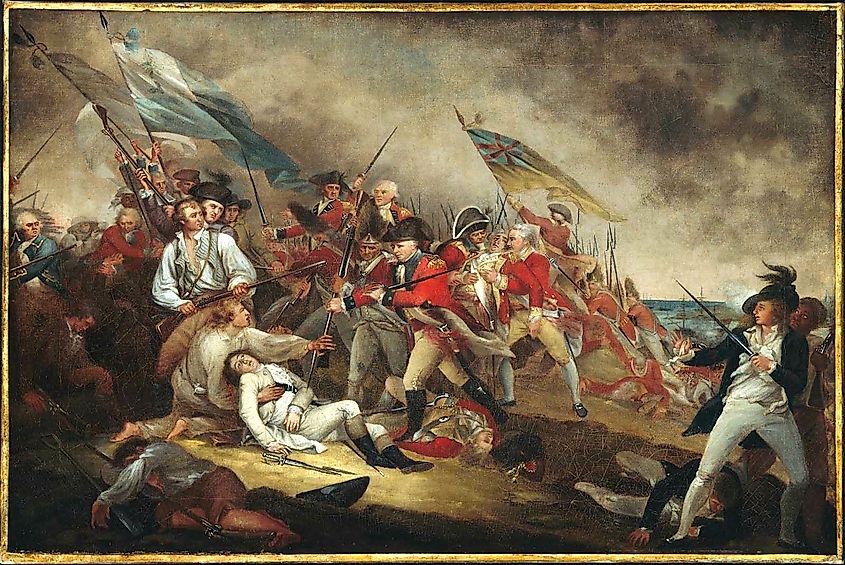
Historians place the total number of British soldiers killed in battle somewhere around 8,000, but these numbers are hotly contested and should be taken with a grain of salt. These figures often come from unreliable sources that either exaggerate or mitigate the true death toll.
While the British might have had the edge on the American army, the colonists were still able to deal with the British defeats or grant them costly victories. The Battle of Bunker Hill, for instance, was officially a victory for British forces; however, the men and material lost in the battle were a much larger blow to the British than the colonists.
British forces were also harassed and attacked in an early form of guerilla warfare, particularly in the southern states by American irregulars. These engagements would have been brief but incredibly chaotic and brutal. The hit-and-run style tactics that these guerillas used totally negated the fighting style that the average British soldier was trained in and had devastating effects.
Deaths Outside Of Combat
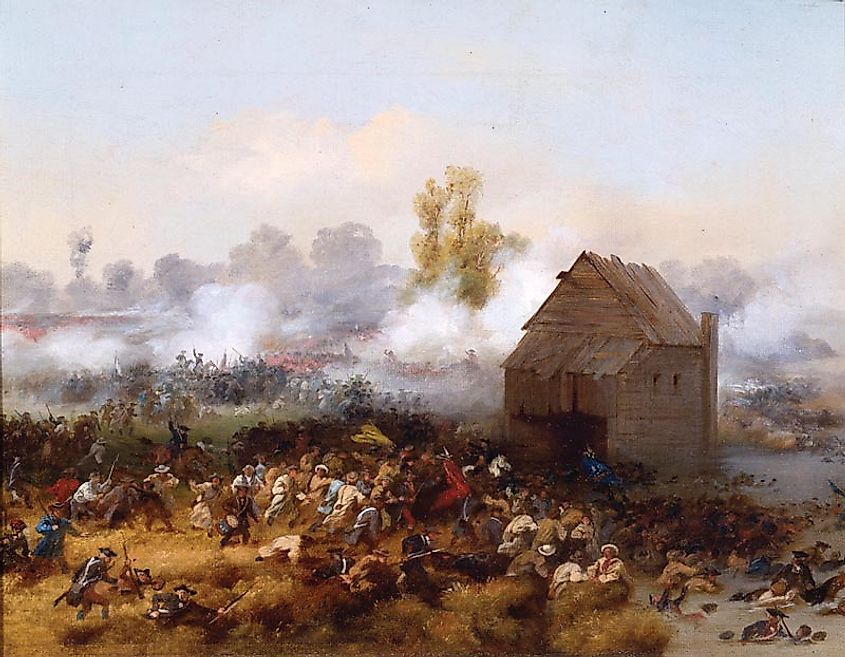
It might surprise some to hear that the vast majority of lives that were claimed during the American Revolution were done outside of combat. Both the American and British armies were ravaged by disease and illness on multiple occasions. Even in the late 18th century, what we consider basic hygiene today was not practiced by most people, making army camps the perfect breeding ground for viruses to grow. Smallpox outbreaks lasted throughout the war and took the lives of thousands on both sides.
The American forces, in particular, had to face down the cold North American winters more than once and paid dearly for it. In 1777, after George Washington was forced to retreat to Valley Forge for the winter, more than 2,000 of Washington's men either starved to death or perished from the elements.
POW Camps
Many American survivors of lost battles or those of surrendered to British forces were thrown into prison camps. The conditions of these camps were far from favorable and, much like army encampments, were hotpots for illness and disease. Some captured POWs were even placed into prison ships where the standard of living was even worse. Not only was it much more deadly, but the crews who manned these ships were notoriously cruel to the prisoners on board. It is estimated that more than 19,000 Americans died in captivity. More than doubling the number of those killed in battle.
Civilian Loss Of Life
Civilians were not spared from this war either. Thousands of colonists were displaced and uprooted from their homes to avoid the fighting, along with a rise in politically motivated attacks on both sides. With roughly half of the American population supporting both the loyalists and the patriots, it was not uncommon for sporadic acts of violence to break out between the two groups. Not only were the European colonists suffering from the war, but so were the numerous Indigenous tribes that lived within the borders of the Thirteen Colonies. As the war erupted between the loyalists and the patriots, nearby tribes were forced to pick a side and hope the other came out on top.
Lesser Known Facts And Figures
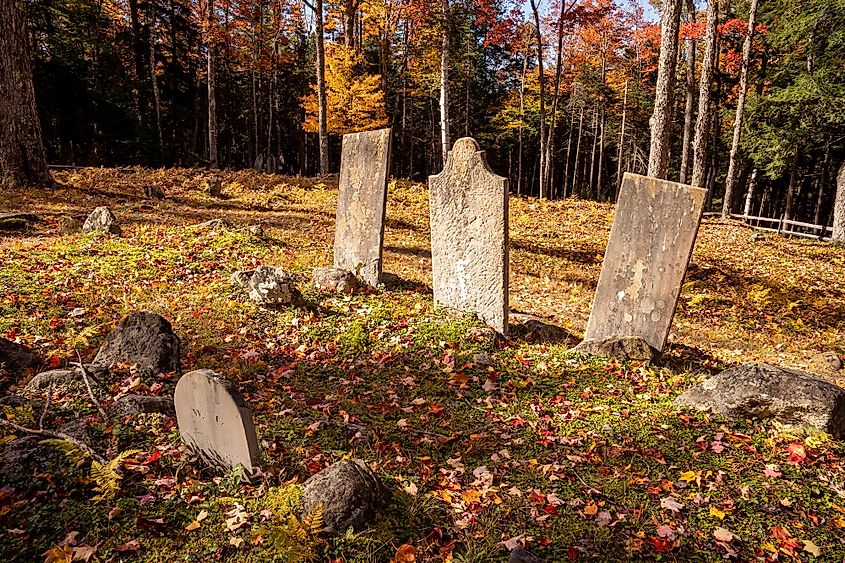
It is estimated that roughly 25,000 - 30,000 Americans died in their war for independence. While at face value, this figure might not seem too significant, it is important to remember that the American colonies only had a population of 2 million people at the time. More than 1% of the colonist population died as a result of the war. To put that into perspective, if the modern-day United States were to lose the same percentage of its population, it would leave 2.5 million dead.
It should also be noted that the American Revolution was more of a civil war than a single united cause fighting back against a foreign tyranny. A large segment of those living in the colonies considered themselves to be both British and loyal subjects of the king. While there were certain regions of the colonies that swayed more one way than the other, in many cases, neighbors were pitted against their neighbors.
In the aftermath of the war, tens of thousands of American colonists who sided with the British ended up fleeing to other parts of the British Empire, with nearly half ending up in Canadian territories like Nova Scotia and New Brunswick.
The United States has been involved in 8 major wars in its history, and the Revolutionary War remains the most deadly when taking into account the percentage of the population lost. Even in the American Civil War, a small percentage of people were killed. Despite all of the bloodshed and depopulation of some regions due to mass emigration after the war, the young United States would go on to become the global hegemon that it is today thanks to the actions of fiercely independent patriots who fought against what they saw as tyranny.











